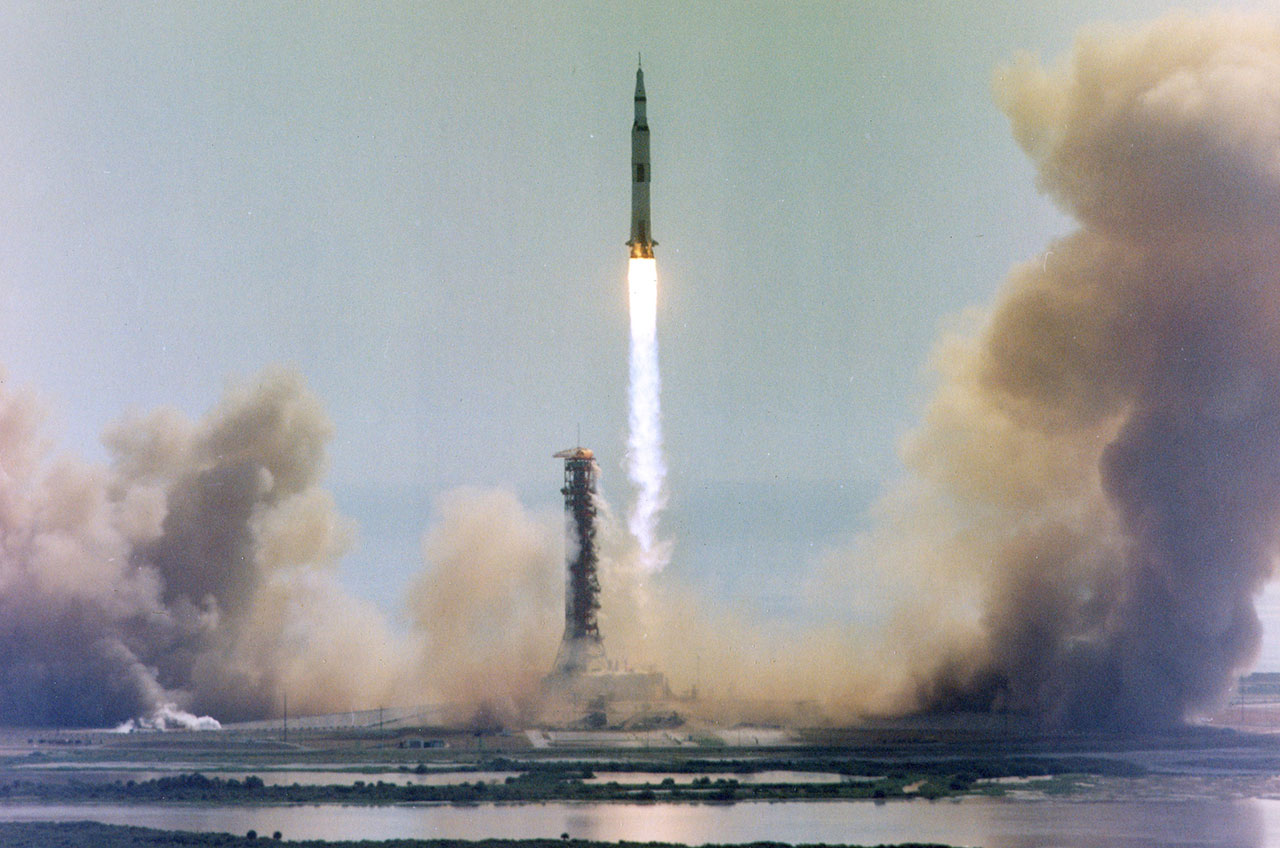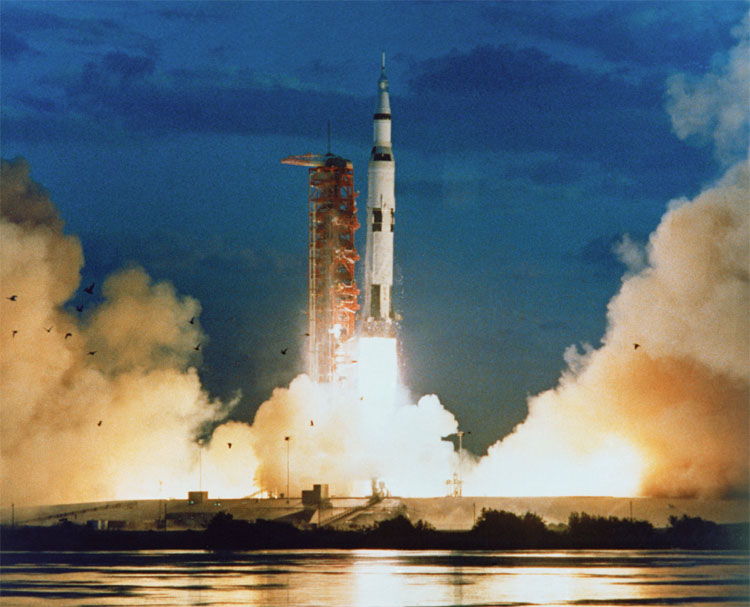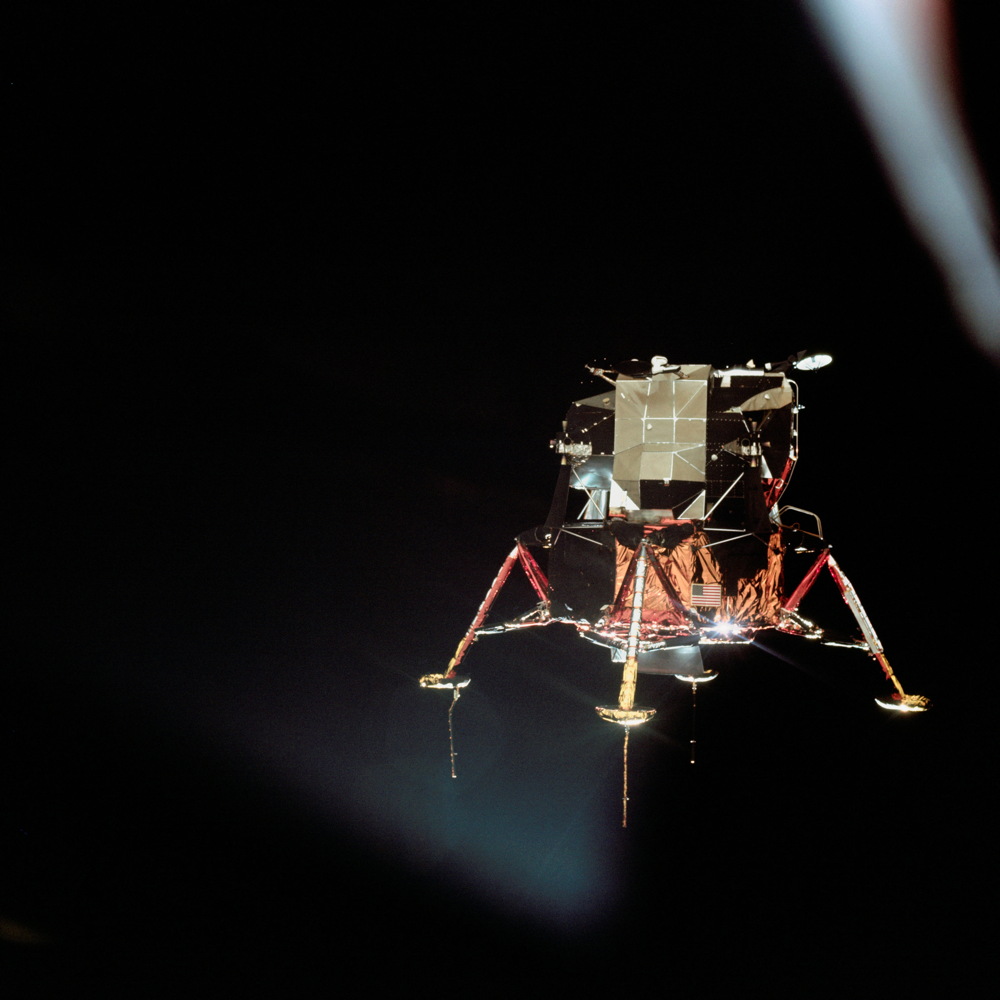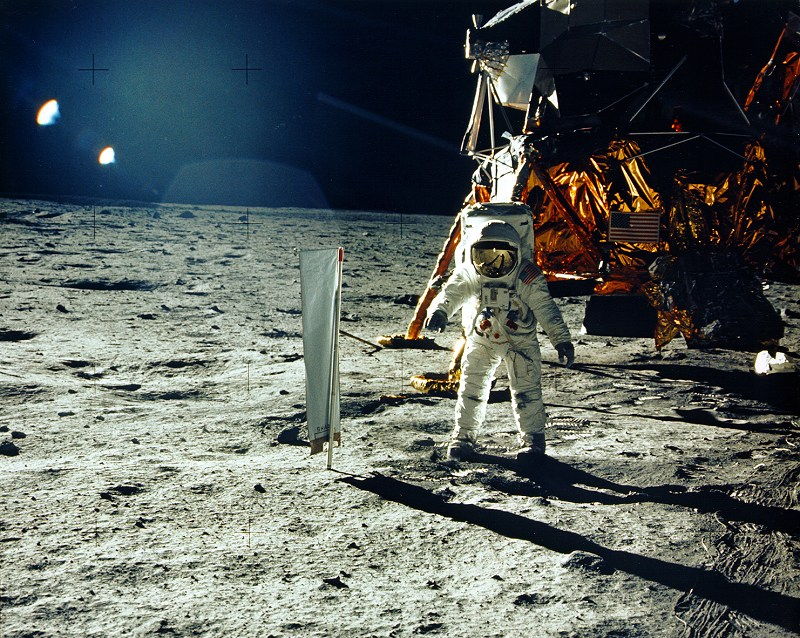Apollo 11's Vintage Tech: The Most Amazing Moon Landing Innovations

While the Apollo 11 landing was on the cutting-edge of technology in 1969, today it's a demonstration of how much could be accomplished with so little.
The computing technology of the average cell phone far exceeds the combined computing power of the two spacecraft that got humans to the moon and home safely.
That doesn't make Apollo 11's technological feats any less impressive, however. The lunar module, for example, flew only twice with astronauts inside before Apollo 11. The hand-stitched, walkable spacesuits that Neil Armstrong and Buzz Aldrin wore on the moon when they stepped onto its face for the first time 45 years ago this month were not used before landing on the lunar surface. [Apollo 11 Moon Landing 45th Anniversary: Complete Coverage]
Here's a brief look at some of the technology that got the United States to the moon and back:
Saturn V rocket
There were several modes of transportation that NASA could have chosen to take to the moon. For example, engineers could have launched two big rockets and then docked the various spacecraft and components in Earth orbit. But it was lunar-orbit rendezvous that made the Saturn V rocket possible.
There were several NASA engineers that proposed the concept over the years, but one of the most famous is John Hoboult, then the assistant chief of the dynamics load division at NASA Langley. NASA said the main benefit of the approach was the lunar lander only had to be a small craft, since an Earth orbit rendezvous required more fuel to get back home.
Get the Space.com Newsletter
Breaking space news, the latest updates on rocket launches, skywatching events and more!
The decision to go with this kind of mission made it possible to launch the entire mission on a single Saturn V rocket. Even at that, it was a monster. The three-stage rocket stood 363 feet (111 meters) tall — taller than the Statue of Liberty — and fully fuelled, it weighed about 6.2 million pounds (2.8 million kilograms).
NASA tested the Saturn V twice without humans, in 1967 (Apollo 4) and 1968 (Apollo 6). That same year, NASA elected to use the Saturn V to send humans all the way to the moon. That mission, Apollo 8, made its crew the first humans to go to the moon and orbit it.

After that successful flight, the Saturn V flew the rest of the Apollo missions, including Apollo 11. The last flight of the rocket was in 1973, when (without a crew) it launched the Skylab space station to orbit. [The Future of Moon Exploration]
Lunar module
The lunar module (LM) was the first spacecraft designed to operate on another world. Unlike a spacecraft made to function in the atmosphere (like the space shuttle, which looked like a plane) the LM was all strange angles and bumps.
This is because in space, there would be no atmosphere to worry about. Shaving the aerodynamic features helped save weight, cutting down the costs of launching the spacecraft all the way to the moon.
The LM was first tested with humans on Apollo 9, which dubbed its spacecraft "Spider." The astronauts flew it away from the command module (which was designed to orbit the moon) and practiced a docking. The LM then flew on every subsequent mission.
During a simulated lunar landing approach on Apollo 10, the LM spun for a few momentsjust as it was supposed to make its way back to the command module. The astronauts quickly got the craft under control, which (through a series of small errors) was pointing the wrong way.
Armstrong famously took control of his LM, dubbed "Eagle," during the landing when he saw the guidance system was moving it towards a rock field. He landed safely with very little fuel left.
The LM successfully made it to the moon on the rest of its missions, save one. On Apollo 13, the command module "Odyssey" experienced an oxygen tank explosion. The astronauts didn't land on the moon, but they did use the LM "Aquarius" as a "lifeboat" to keep them alive and to make course corrections to bring them back to Earth safely.
Odyssey was the only spacecraft with a heat shield, but Aquarius kept the astronauts safe long enough for them to transfer back to Odyssey for their landing in the Pacific Ocean.
Computers
While the Apollo missions are best remembered for the computers the astronauts operated, there were several other important computers used for the mission. One example is the Saturn V computer that was used to guide the rocket into Earth orbit, automatically. NASA also had large computers on the ground that it could use for things like navigation corrections.

On lunar missions, however, the bulk of the attention was focused on the command module computer and the lunar module computers. The CM was in charge of navigating the crew between the Earth and the moon, while the LM did landings, ascents and rendezvous, according to NASA.
The CM and the LM each had a computer (with different software, but the same design) called the Primary Guidance, Navigation, and Control System (PGNCS, pronounced "pings"). The LM also had a computer which was a part of the Abort Guidance System, to give a backup if the PGNCS failed during the landing.
"Ground systems backed up the CM computer and its associated guidance system so that if the CM system failed, the spacecraft could be guided manually based on data transmitted from the ground," NASA stated. "If contact with the ground were lost, the CM system had autonomous return capability."
Spacesuits
Unlike the space shuttle's spacesuit, each Apollo suit was custom-tailored for its astronaut crew of three people. The suits were designed to be fully operational in the vacuum of space and also to walk around on the moon.
According to NASA, each mission required 15 suits. The main (prime) crew had nine suits between them, with one used for flight, one for training and one as a back-up in case something happened with the flight suit. The backup crew of three people required six suits between them: one for flight and one for training.
The construction of the spacesuit changed over the missions as the requirements of astronauts became more complex. For example, designers changed the suit waistfor Apollo 15, 16 and 17 so that the astronauts could use lunar rovers more easily, allowing them to do more complex geological expeditions further from the lunar module. [How the Apollo 11 Moon Landing Works (Infographic)]
There were several layers to the suit. The inside was a sort of "long john" fabric that included cooling water tubes sewed to the material, to keep the astronauts cool while working on the lunar surface. After that were several layers of nylon, Kapton, glass-fiber cloth, Mylar and Teflon to maintain pressure and protect the astronauts from radiation and micrometeroids.
Lunar gloves and boots were included to walk around the moon's surface and pick up rocks. To help the astronauts "feel" things as they pick up, the glove digits included silicone rubber.
Attached to the suit was a polycarbonate helmet, which attached using a neck ring that stayed in place as the astronaut moved his head. Another important supplement to the suit was the portable life support system, a backpack that allowed astronauts to breathe and maintain suit pressure for up to seven hours on the surface.

Follow Elizabeth Howell @howellspace. Follow us @Spacedotcom, Facebook and Google+. Original article on Space.com.
Join our Space Forums to keep talking space on the latest missions, night sky and more! And if you have a news tip, correction or comment, let us know at: community@space.com.

Elizabeth Howell (she/her), Ph.D., was a staff writer in the spaceflight channel between 2022 and 2024 specializing in Canadian space news. She was contributing writer for Space.com for 10 years from 2012 to 2024. Elizabeth's reporting includes multiple exclusives with the White House, leading world coverage about a lost-and-found space tomato on the International Space Station, witnessing five human spaceflight launches on two continents, flying parabolic, working inside a spacesuit, and participating in a simulated Mars mission. Her latest book, "Why Am I Taller?" (ECW Press, 2022) is co-written with astronaut Dave Williams.









